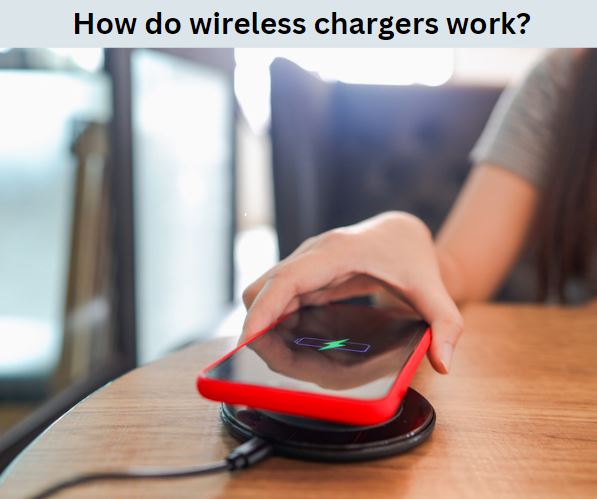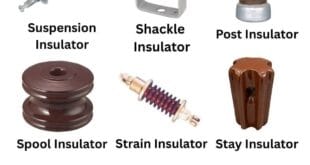How do wireless chargers work?
Answer
Wireless chargers work by using electromagnetic induction to transfer energy from the charger to a compatible device without the need for physical connectors.

Reasoning
Wireless chargers operate through a process called electromagnetic induction. Inside the charger, there is a coil that generates an alternating electromagnetic field when electricity passes through it. A compatible device, like a smartphone, contains a receiving coil that converts this electromagnetic field back into electrical energy, which is then used to charge the device’s battery. This process requires the charger and the device to be in close proximity, typically a few millimeters apart, to ensure efficient energy transfer.
How Does Wireless Charging Work?
(Teasing the Concept of Electromagnetic Fields)
Wireless charging, or inductive charging, has become increasingly popular in recent years. It’s a convenient way to charge your devices without worrying about cables, but have you ever wondered how it works? Let’s dive into the basics of this cutting-edge technology.
What Is Wireless Charging?
Wireless charging is a technology that allows devices like smartphones, smartwatches, and even some electric toothbrushes to charge without being physically connected to a power source via a cable. You simply place your device on a compatible charging pad, and it starts charging. It’s a neat trick, but there’s much more going on beneath the surface.
At the heart of wireless charging is the principle of transferring energy between two objects through electromagnetic fields. But don’t worry—this isn’t as complicated as it sounds. Think of it like a magic bridge that lets energy flow from the charging pad to your device without a wire connecting them.
The Science Behind the Magic
The key to wireless charging is electromagnetic induction. Inside the charging pad, there’s a coil of wire that generates an electromagnetic field when electricity flows through it. This field spreads out, reaching the device you’ve placed on the pad. Your device has a similar coil inside it, designed to capture this energy and convert it back into electricity to charge the battery.
This process is called inductive charging. It’s similar to how a transformer works, but instead of transferring energy between two coils of wire in a single device, it happens wirelessly between the charging pad and your device.
Why Wireless Charging Is Safe
One common question about wireless charging is: is it safe? After all, we’re talking about electromagnetic fields here—aren’t those dangerous?
The short answer is no. The electromagnetic fields used in wireless charging are very low power and carefully controlled to ensure they only transfer energy to compatible devices. There’s no risk of these fields harming you, your device, or anything else in your environment.
Wireless chargers also have built-in safety features. For example, many charging pads are designed to automatically stop charging if they detect a foreign object like keys or coins on the pad. This prevents overheating and ensures that the charger only works with the right devices.
How Fast Is Wireless Charging?
Another question many people have is: is wireless charging as fast as wired charging? The answer depends on the charger and the device.
In the early days of wireless charging, the process was much slower than using a standard charging cable. However, recent advances in technology have improved charging speeds significantly. Many modern wireless chargers are capable of delivering enough power to charge your device just as fast—or even faster—than traditional wired methods.
There are even fast wireless chargers available that can power up your phone at lightning speed. Just keep in mind that, like with wired charging, the speed can vary based on factors like the charger’s wattage and your device’s compatibility.
Convenience Comes with Some Trade-offs
While wireless charging is convenient, it’s not without a few limitations. For starters, the device must remain on the charging pad while charging. Unlike a charging cable, which allows you to move your device around freely, wireless charging requires you to leave the device in place.
Additionally, wireless charging tends to generate more heat than wired charging. This isn’t typically an issue, as most devices are built to handle the extra heat, but it’s something to be aware of if you notice your phone feeling warmer than usual while wirelessly charging.
The Future of Wireless Charging
Wireless charging technology continues to evolve. Researchers are currently exploring ways to make wireless charging even more efficient and extend its range. Imagine being able to charge your phone simply by walking into a room—no pad needed!
One of the most exciting developments in this area is long-distance wireless charging, which uses radio waves or other methods to send power to devices from a greater distance. While this technology is still in its early stages, it has the potential to revolutionize how we think about powering our devices.
How Does Electromagnetic Induction Work?
So, how does electromagnetic induction enable wireless charging? Without diving too deep into technical jargon, it involves creating a magnetic field when current flows through a coil of wire. This field induces a current in a nearby coil (the one in your device), which can then be used to charge your battery.
The details of how this process works are fascinating, and it’s all explained in depth on our website. If you’re curious about the technical side of wireless charging—including how different devices handle it and what innovations are on the horizon—be sure to check out the full breakdown!
FAQs
What is electromagnetic induction?
It is the process of generating electric current through a changing magnetic field.
Do all phones support wireless charging?
No, only phones with built-in wireless charging capability can use it.
Is wireless charging slower than wired charging?
Generally, yes, but newer wireless chargers are improving in speed.
Do I need a special case for wireless charging?
Not necessarily, but very thick or metal cases may interfere with charging.
Can I use my phone while it’s wirelessly charging?
Yes, but it may charge slower due to the energy consumption.
Does wireless charging affect battery life?
Properly designed wireless chargers should not affect battery life more than wired chargers.
Can wireless chargers overheat my phone?
They can generate heat, but most have safety features to prevent overheating.
Is wireless charging safe?
Yes, it is safe for both the device and the user when using certified chargers.
How close does my phone need to be to the wireless charger?
Typically within a few millimeters to an inch, depending on the charger.
Can I wirelessly charge multiple devices at once?
Some wireless chargers support multiple devices, but it depends on the model.
 Electrical Engineering World Wiring a Brighter Tomorrow!
Electrical Engineering World Wiring a Brighter Tomorrow!


